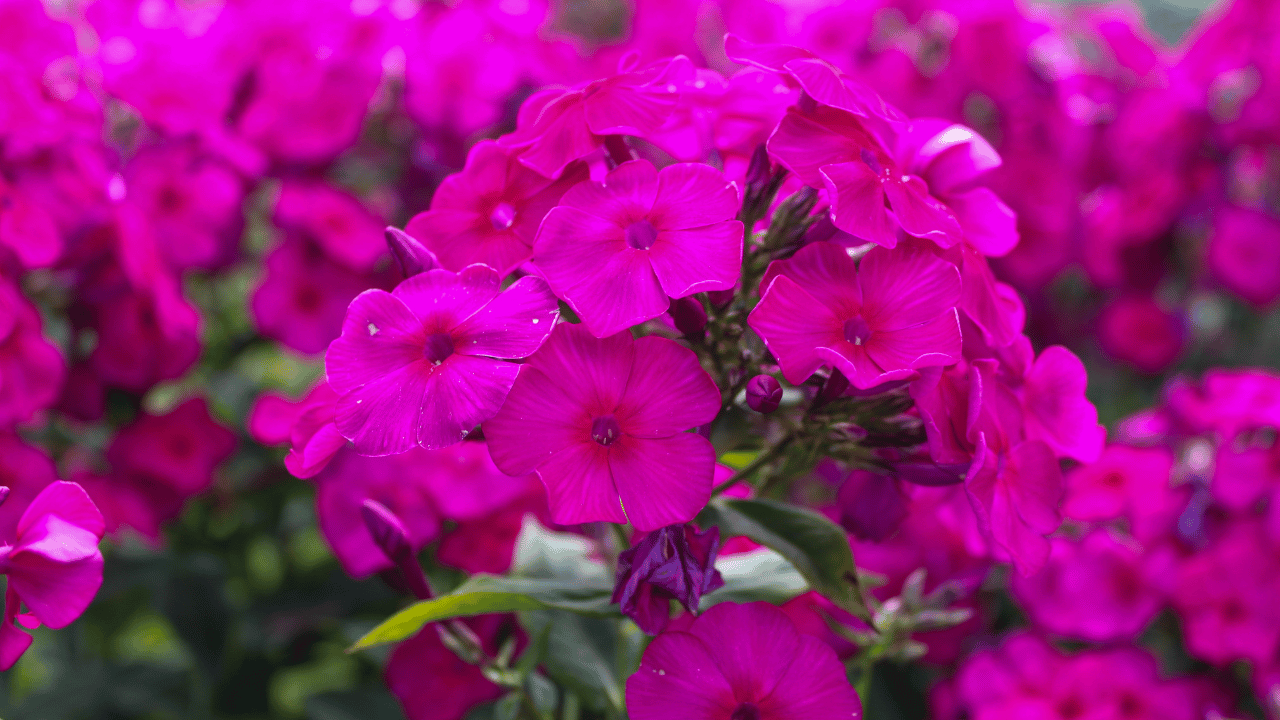Phlox plants are beloved for their clusters of vibrant, fragrant flowers that can bring stunning color to any garden. Whether you’re growing tall garden phlox or creeping varieties, these resilient perennials need the right care to thrive. With a few specific tips, you can keep your phlox blooming abundantly, pest-free, and flourishing year after year. Let’s explore ten key ways to care for your phlox plants.
1. Choose the Right Location
Phlox thrives in a location that receives plenty of sunlight, ideally six hours or more of direct sun each day. While some varieties tolerate partial shade, full sun promotes optimal blooming. The location should also provide good air circulation, which helps prevent mildew and other fungal diseases that can damage phlox.
Ensure the area is sheltered from strong winds. Although phlox are hardy, excessive wind can snap their stems, especially the taller varieties. A protected but sunny spot allows your plants to grow sturdy and full.
2. Prepare Well-Drained Soil
Phlox plants prefer well-drained, slightly acidic soil with plenty of organic matter. Before planting, work compost or well-rotted manure into the soil to enrich it. This helps retain moisture without causing waterlogging, which can lead to root rot, a common issue with phlox.
If your soil is heavy clay or prone to poor drainage, consider amending it with sand or planting your phlox in raised beds. This ensures excess water drains away, allowing the roots to remain healthy and robust.
3. Water Consistently but Avoid Overwatering
Phlox needs consistent moisture, particularly during dry spells, but it doesn’t appreciate soggy conditions. Water deeply once or twice a week, ensuring the soil remains evenly moist but not waterlogged. Early morning is the best time to water, so foliage has time to dry out before evening.
Overwatering can lead to root diseases and encourage fungal growth. It’s important to strike the right balance by checking the soil’s moisture level regularly. If the top inch feels dry, it’s time to water.
4. Mulch to Retain Moisture
Applying a 2-3 inch layer of organic mulch around your phlox plants can help conserve soil moisture, keep roots cool, and prevent weeds from competing for nutrients. Mulch also improves soil structure as it breaks down, providing a slow-release source of nutrients.
Keep mulch a few inches away from the plant’s crown to avoid trapping moisture near the stems, which could invite rot or pests. Mulching is especially beneficial during hot, dry weather, helping your phlox maintain steady growth.
5. Deadhead Regularly
To encourage continuous blooming throughout the growing season, deadhead your phlox by removing spent flowers. This prevents the plant from using energy to produce seeds and instead redirects it toward producing new blooms. Cut the flower stems back to a healthy leaf joint.
Regular deadheading not only improves the appearance of your phlox but also helps prevent disease by promoting better airflow through the plant’s canopy. By staying on top of this task, you can extend the blooming period significantly.
6. Support Tall Varieties
Tall garden phlox varieties often require staking to prevent their stems from bending or breaking under the weight of their blooms. Place stakes early in the growing season to avoid damaging roots later on. Tie stems loosely to stakes with soft twine or garden ties.
A cage or peony ring can also provide discreet support for these taller plants. Giving your phlox proper support ensures upright growth, allowing flowers to be fully displayed and reducing the chance of stress from heavy blooms.
7. Fertilize Moderately
Phlox plants benefit from moderate fertilization to sustain their vigorous growth and abundant blooms. In early spring, apply a balanced, slow-release fertilizer, such as a 10-10-10 formula, and lightly work it into the soil around the base of the plants. Avoid excessive nitrogen, as it can promote foliage growth at the expense of blooms.
A second application of fertilizer halfway through the growing season can help boost late-summer flowering. Be sure to water after applying fertilizer to prevent root burn and ensure nutrients reach the roots.
8. Prune for Shape and Health
Regular pruning helps maintain the shape and health of your phlox. In early spring, remove any dead, damaged, or weak stems to allow stronger growth to flourish. Thin out overcrowded stems to improve air circulation, reducing the risk of fungal infections like powdery mildew.
In the fall, cut back the plants to just above ground level after flowering has finished. This helps prevent disease from overwintering in the foliage and encourages healthy growth in the spring.
9. Monitor for Pests and Diseases
While phlox plants are generally hardy, they can be susceptible to pests like spider mites and diseases such as powdery mildew. Keep an eye out for discolored or curling leaves, which can indicate a problem. Treat mildew early with fungicidal sprays or by improving air circulation around the plants.
Aphids, leafhoppers, and slugs may also target your phlox. Use natural predators like ladybugs or horticultural oils to control infestations. Regular monitoring ensures pests and diseases are caught before they cause significant damage.
10. Divide Every Few Years
Dividing your phlox plants every 3-4 years keeps them healthy and prevents overcrowding, which can reduce flowering and increase disease susceptibility. Early spring or late fall is the best time to divide. Gently lift the plant from the ground, divide the root ball with a sharp spade, and replant the sections.
By dividing regularly, you not only rejuvenate the parent plant but also create new plants to expand your garden. Make sure to water the newly planted divisions thoroughly to help them establish quickly.

